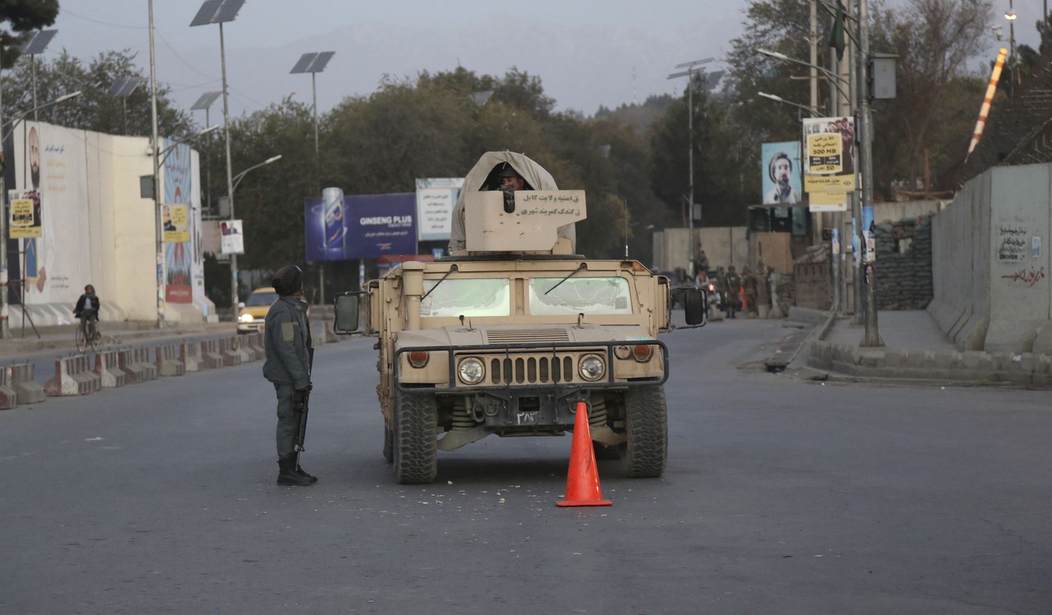For almost two decades, the U.S. taxpayer has forked out close to two trillion dollars – around three thousand dollars per person – on efforts to bring about a peaceful and prosperous Afghanistan. But as the final contingency of U.S. troops prepares to fly home in the coming weeks, even as the Taliban amplifies its bloodletting across the beleaguered nation, controversy swirls as to what went wrong and how so much money could be disseminated and disappeared.
Since 2002, some $144 billion was made available for Afghanistan reconstruction, according to the Special Inspector General for Afghanistan (SIGAR), which was established in 2008 in a bid to monitor waste and fraud. Since then, billions – mainly from the U.S. Department of Defense budget – was devoted to projects to construct and bankroll critical infrastructure and institutions ranging from hotels and hospitals to prisons, schools, roads, bridges, and military bases – but the waste continued, despite repeated reports and red-flagging from the watchdog, which is led by John Sopko.
SIGAR has identified more than $20 billion in waste, and that figure is believed to be on the highly modest side.
In his addresses to Congress this year, Sopko pointed out that the U.S. spent billions of taxpayer dollars on projects without first consulting Afghan officials and locals to whether the initiative was either wanted or needed. As a result, at least $2.4 billion was lost to projects that were abandoned, destroyed, or never got off the ground. In comparison, as per SIGAR, only $342 million worth of projects were considered to be “in good condition.”
Last week, Sopko painted a bleak picture of the Afghan aid situation going forward. While the U.S. government has pledged to keep propping up the Kabul leadership and the Afghan forces, it remains unclear who and how will watch over how that money is spent with the SIGAR team moving to more off-site evaluations. As it stands, $6.7 billion in U.S. monies is awaiting dissemination across the various sectors in Afghanistan.
So looking back, what are some of the most flagrant cases of squandered U.S. dollars?
In one case, roughly $10 billion was dished out for mostly counter-narcotics and stabilization initiatives. Nonetheless, Afghanistan still supplies more than 80 percent of the world’s heroin and opium, as well as meth. The drug trade remains one of the Taliban’s primary sources of income.
Moreover, more than $500 billion has been compiled in interest, as the U.S. fought much of the war on borrowed dollars, and for years, SIGAR has lamented that this money is merely exacerbating conflicts, enabling corruption, and boosting insurgent outfits. With that, the notion of “ghost soldiers” has and continues to be a big problem – meaning that thousands are being paid despite not showing up for work, being deceased, or not existing in the first place. Yet, someone was taking those paychecks.
An investigation into “ghost soldiers” was announced in 2019. Suddenly, 42,000 Afghan troops and police names disappeared from the payroll. A report published in late August 2020 found that “50 percent to 70 percent of police positions were ‘ghost soldiers.'”
Then there was the $28 million spent on Afghan army uniforms in 2017. But the spending spree was later criticized given that the gear selected was deemed only suitable for environments “so rare they account for just 2% of Afghanistan’s countryside.”
Whoops.
The U.S. Department of Justice has also had its work cut out over the past two decades arresting and charging both American and Afghan nationals for an endless slew of deceitful opportunities aimed at illegally benefitting from the money thrown blindly into the war machine.
From 2012 to 2015, the U.S. Department of Justice took on at least eight cases centered on mass bribery, fraud, and conspiracy to steal American monies in Afghanistan, as per public court filings. Still, the dilemma endured.
Multiple cases in recent years have shown U.S. government contractors in Afghanistan being sentenced to prison for “accepting illegal kickbacks” from Afghan subcontractors in return for assistance in obtaining subcontracts.
It is not just contractors – active-duty U.S. troops have also been embroiled in dozens of fraud-related schemes in Afghanistan, according to DOD filings. These ranged from convictions of a U.S. soldier collaborating with locals to smuggle almost $290,000 worth of supplies to be sold off-base, to a U.S. Army Corps of Engineers soliciting $320,000 in bribes from contractors “in return for assistance” in U.S. government contracts, to an Army Reserve captain soliciting $1.3 million in bribes and “conspiring to traffic heroin.”
SIGAR reports have also drawn attention to misused dollars at military and police training facilities. In one instance in 2016, SIGAR noted that the U.S. Army Corps of Engineers awarded a $3.1 million firm-fixed-price to Assist Consultants Inc. to design and build a compound to train 100 female students in the Afghan National Police. An audit three years later showed that the compound had no electricity and had never been used.
Much of the waste and corruption from all sides of the spectrum seem to have carried on, despite it being languished and condemned in reports numerous times, months, and years on end.
A classic example is in the education sector.
A September 2019 watchdog letter stated that while the U.S. Agency for International Development (USAID) had been funding the Afghan school program since 2002, in 2009, the Afghanistan Ministry of Education (MoE) initiated a revised curriculum for general and Islamic education.
“Based on that curriculum, new textbooks for basic education were printed and distributed with the support of USAID and other development partners,” the report continued. “However, we found book quality deficiencies, such as loose or blank pages, misspellings, and low-quality paper. Principals and teachers at a quarter of the schools inspected stated, ‘that the books were no longer in usable condition.'”
Schools themselves across the embattled country have also been plagued with the same dilemmas for years on end, bringing into question just how much of the more than $1.1 billion USAID has disbursed effectively went to “improving the quality of Afghanistan’s education system.”
“From October 2015 to October 2018, we visited 171 schools in 10 provinces throughout Afghanistan and issued ten reports and four alert letters addressing the condition of those schools,” SIGAR said. “We found that many of the schools had structural deficiencies (e.g., showed signs of settlement or deterioration, cracks or large holes in their roofs, and damaged or removed windows and doors) that could potentially impact safety and the delivery of education.”
And while the U.S. footprint militarily has almost faded away, President Biden has pledged $4 billion for the coming fiscal year.
But the pivotal question persists: Will your tax dollars go toward saving Afghan from a Taliban takeover?
Read more about Afghanistan from Hollie McKay:
How much of Afghanistan does the Taliban really control? The Taliban are taking territory …
There are still some twenty terrorist groups fighting the Afghan government. What happens now? The Afghanistan/Pakistan region remains fertile ground for extremists
Afghanistan Dispatches: Portraits of Resilience While slapped with uncertainty as the country crumbles to Taliban control, the streets of Kabul paint of picture of life goes on















Join the conversation as a VIP Member